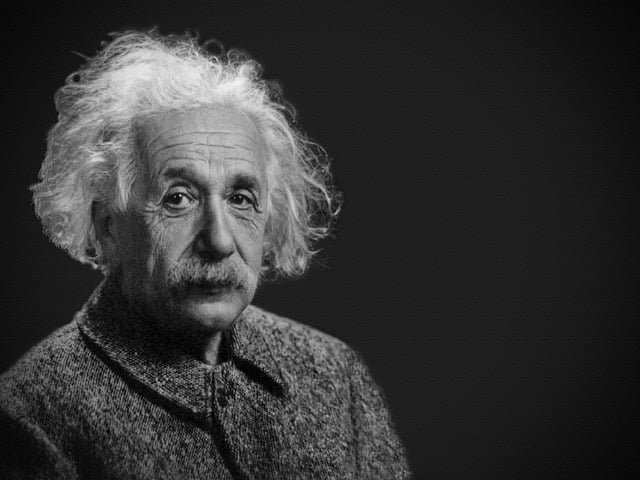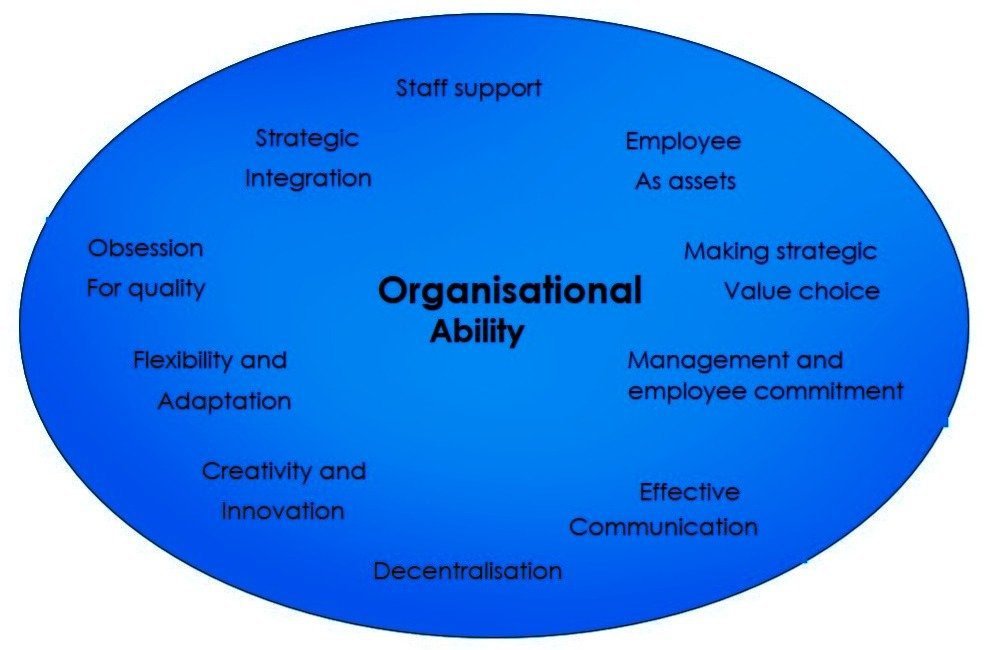Famous Inspirational Quotes: Albert Einstein (14 March 1879 – 18 April 1955) was a German-born theoretical physicist who developed the theory of relativity, one of the two pillars of modern physics. His work is also known for its influence on the philosophy of science. He is best known to the general public for his mass-energy equivalence formula E = mc2, which has been dubbed “The world’s most famous equation“. He received the 1921 Nobel Prize in Physics “For his services to theoretical physics, and especially for his discovery of the law of the photoelectric effect“, a pivotal step in the development of quantum theory. Free Download in PDF; 399+ FAMOUS QUOTES BY ALBERT EINSTEIN!
Here are the Best Albert Einstein Quotes:
Einstein’s name has become synonymous with genius and creativity. Named Person of the Century by TIME in 1999, Einstein is a rare icon, whose wisdom extended far beyond the realm of science to reveal a man with an almost childlike sense of wonder and a profound love of humanity. Yet while Einstein clearly had a knack for science and mathematics from an early age, he did not excel at everything he put his mind to. He went to elementary school and later grammar school in Munich, where he felt alienated and stifled by the school’s rigid pedagogical approach. He was an average pupil and experienced speech challenges, which permanently influenced his view of education and human potential. Also, 50 Famous Motivational and Inspirational Quotes by Abraham Lincoln! 99+ Abraham Lincoln Quotes, free Download.
The following best Quotes below are:
- Any intelligent fool can make things bigger, more complex, and more violent. It takes a touch of genius — and a lot of courage — to move in the opposite direction.
- Imagination is more important than knowledge.
- Gravitation is not responsible for people falling in love.
- I want to know God’s thoughts; the rest are details.
- The hardest thing in the world to understand is the income tax.
- Reality is merely an illusion, albeit a very persistent one.
- The only real valuable thing is intuition.
- A person starts to live when he can live outside himself.
- I am convinced that He (God) does not play dice.
- God is subtle but he is not malicious.
- The weakness of attitude becomes the weakness of character.
- I never think of the future. It comes soon enough.
- The eternal mystery of the world is its comprehensibility.
- If people are good only because they fear punishment, and hope for reward, then we are a sorry lot indeed.
- I always get by best with my naivety, which is 20 percent deliberate.
- A happy man is too satisfied with the present to dwell too much on the future.
- Nothing truly valuable arises from ambition or from a mere sense of duty; it stems rather from love and devotion toward men and toward objective things.
- Three rules of work: Out of clutter find simplicity; From discord find harmony; In the middle of difficulty lies opportunity.
- On the mysterious: It is the fundamental emotion which stands at the cradle of true art and true science. He who knows it not and can no longer wonder, no longer feel amazement, is as good as dead, a snuffed-out candle.
- I salute the man who is going through life always helpful, knowing no fear, and to whom aggressiveness and resentment are alien.
- A calm and modest life brings more happiness than the pursuit of success combined with constant restlessness.
- The only thing more dangerous than ignorance is arrogance.
- Weak people revenge. Strong people forgive. Intelligent people ignore.
- If you want your children to be intelligent, read them fairy tales. If you want them to be more intelligent, read them more fairy tales.
- To see with one’s own eyes, to feel and judge without succumbing to the suggestive power of the fashion of the day, to be able to express what one has seen and felt in a trim sentence or even in a cunningly wrought word – is that not glorious? Is it not a proper subject for congratulation?
- Most people say that it is the intellect which makes a great scientist. They are wrong: it is the character.
- The ideals which have lighted me on my way and time after time gave me new courage to face life cheerfully, have been Truth, Goodness, and Beauty.
- Sometimes one pays most for the things one gets for nothing.
- Science without religion is lame. Religion without science is blind.
- Anyone who has never made a mistake has never tried anything new.
- Great spirits have often encountered violent opposition from weak minds.
- Everything should be made as simple as possible, but not simpler.
- Common sense is the collection of prejudices acquired by age eighteen.
- Science is a wonderful thing if one does not have to earn one’s living at it.
- The secret to creativity is knowing how to hide your sources.
- The only thing that interferes with my learning is my education.
- God does not care about our mathematical difficulties. He integrates empirically.
- The whole of science is nothing more than a refinement of everyday thinking.
- Technological progress is like an AXE in the hands of a pathological criminal.
- Peace cannot be kept by force. It can only be achieved by understanding.
- The most incomprehensible thing about the world is that it is comprehensible.
- We can’t solve problems by using the same kind of thinking we used when we created them.
- Education is what remains after one has forgotten everything he learned in school.
- The important thing is not to stop questioning. Curiosity has its own reason for existing.
- Do not worry about your difficulties in Mathematics. I can assure you mine are still greater.
- Equations are more important to me because politics is for the present, but an equation is something for eternity.
- If A is a success in life, then A equals x plus y plus z. Work is x; y is playing; and z is keeping your mouth shut.
- Two things are infinite: the universe and human stupidity; and I am not sure about the universe.
- As far as the laws of mathematics refer to reality, they are not certain, as far as they are certain, they do not refer to reality.
- Whoever undertakes to set himself up as a judge of Truth and Knowledge is shipwrecked by the laughter of the gods.
- I know not with what weapons World War III will be fought, but World War IV will be fought with sticks and stones.
- In order to form an immaculate member of a flock of sheep one must, above all, be a sheep.
- The fear of death is the most unjustified of all fears, for there’s no risk of accident for someone who’s dead.
- Too many of us look upon Americans as dollar chasers. This is a cruel libel, even if it is reiterated thoughtlessly by the Americans themselves.
- Heroism on command, senseless violence, and all the loathsome nonsense that goes by the name of patriotism — how passionately I hate them!
- No, this trick won’t work…How on earth are you ever going to explain in terms of chemistry and physics so important a biological phenomenon as first love?
- My religion consists of a humble admiration of the illimitable superior spirit who reveals himself in the slight details we are able to perceive with our frail and feeble mind.
- Yes, we have to divide up our time like that, between our politics and our equations. But to me, our equations are far more important, for politics are only a matter of present concern. A mathematical equation stands forever.
- The release of atom power has changed everything except our way of thinking…the solution to this problem lies in the heart of mankind. If only I had known, I should have become a watchmaker.
- Great spirits have always found violent opposition from mediocrities. The latter cannot understand it when a man does not thoughtlessly submit to hereditary prejudices but honestly and courageously uses his intelligence.
- The most beautiful thing we can experience is the mysterious. It is the source of all true art and all science. He to whom this emotion is a stranger, who can no longer pause to wonder and stand rapt in awe, is as good as dead: his eyes are closed.
- A man’s ethical behavior should be based effectually on sympathy, education, and social ties; no religious basis is necessary. Man would indeed be in a poor way if he had to be restrained by fear of punishment and hope of reward after death.
- The further the spiritual evolution of mankind advances, the more certain it seems to me that the path to genuine religiosity does not lie through the fear of life, and the fear of death, and blind faith, but through striving after rational knowledge.
- Now he has departed from this strange world a little ahead of me. That means nothing. People like us, who believe in physics, know that the distinction between past, present, and future is only a stubbornly persistent illusion.
- You see, wire telegraph is a kind of a very, very long cat. You pull his tail in New York and his head is meowing in Los Angeles. Do you understand this? And radio operates exactly the same way: you send signals here, they receive them there. The only difference is that there is no cat.
- One had to cram all this stuff into one’s mind for the examinations, whether one liked it or not. This coercion had such a deterring effect on me that, after I had passed the final examination, I found the consideration of any scientific problems distasteful to me for an entire year.
- …one of the strongest motives that lead men to art and science is escaping from everyday life with its painful crudity and hopeless dreariness, from the fetters of one’s own ever-shifting desires. A finely tempered nature longs to escape from the personal life into the world of objective perception and thought.
- He who joyfully marches to music rank and file has already earned my contempt. He has been given a large brain by mistake since for him the spinal cord would surely suffice. This disgrace to civilization should be done away with at once. Heroism at command, how violently I hate all this, how despicable and ignoble war is; I would rather be torn to shreds than be a part of so base an action. It is my conviction that killing under the cloak of war is nothing but an act of murder.
- A human being is a part of a whole, called by us _universe_, a part limited in time and space. He experiences himself, his thoughts and feelings as something separated from the rest… a kind of optical delusion of his consciousness. This delusion is a kind of prison for us, restricting us to our personal desires and to affection for a few persons nearest to us. Our task must be to free ourselves from this prison by widening our circle of compassion to embrace all living creatures and the whole of nature in its beauty.
- Few are those who see with their own eyes and feel with their own hearts.
- Imagination is more important than knowledge. Knowledge is limited. Imagination encircles the world.
- Unthinking respect for authority is the greatest enemy of truth.
- Try not to become a man of success, but rather try to become a man of value.
- I am by heritage a Jew, by citizenship a Swiss, and by makeup a human being, and only a human being, without any special attachment to any state or national entity whatsoever.
- Great spirits have always encountered violent opposition from mediocre minds.
- Not everything that can be counted counts, and not everything that counts can be counted.
- Everybody is a genius. But if you judge a fish by its ability to climb a tree, it will live its whole life believing that it is stupid.
- Look deep into nature, and then you will understand everything better.
- All religions, arts, and sciences are branches of the same tree.
- Any intelligent fool can make things bigger and more complex… It takes a touch of genius – and a lot of courage to move in the opposite direction.
- A man should look for what is, and not for what he thinks should be.
- In the middle of difficulty lies opportunity.
- A person who never made a mistake never tried anything new.
- Education is what remains after one has forgotten what one has learned in school.
- A table, a chair, a bowl of fruit and a violin; what else does a man need to be happy?
- A human being is part of a whole called by us the universe.
- The important thing is to not stop questioning. Curiosity has its own reason for existing.
- A question that sometimes drives me hazy: am I or are the others crazy?
- Anger dwells only in the bosom of fools.
- Life is like riding a bicycle. To keep your balance you must keep moving.
- Concern for man and his fate must always form the chief interest of all technical endeavors. Never forget this in the midst of your diagrams and equations.
- There are only two ways to live your life. One is as though nothing is a miracle. The other is as though everything is a miracle.
- All that is valuable in human society depends upon the opportunity for development accorded the individual.
- Once you stop learning, you start dying.
- It’s not that I’m so smart, it’s just that I stay with problems longer.
- It has become appallingly obvious that our technology has exceeded our humanity.
- The only one who devotes himself to a cause with his whole strength and soul can be a true master. For this reason, mastery demands all of a person.
- He who can no longer pause to wonder and stand rapt in AWE is as good as dead; his eyes are closed.
- I have no special talent. I am only passionately curious.
- Weak people revenge. Strong people forgive. Intelligent people ignore.
- A ship is always safe the shore but that is not what it’s built for.
- What is right is not always popular, and what is popular is not always right.
- Education is not the learning of facts, it’s rather the training of the mind to think.
- I speak to everyone in the same way, whether he is the garbage man or the president of the university.
- I am thankful for all of those who said NO to me. Its because of them I’m doing it myself.
- Never give up on what you really want to do. The person with big dreams is more powerful than the one with all the facts.
- Common sense is the collection of prejudices acquired by age eighteen.

















